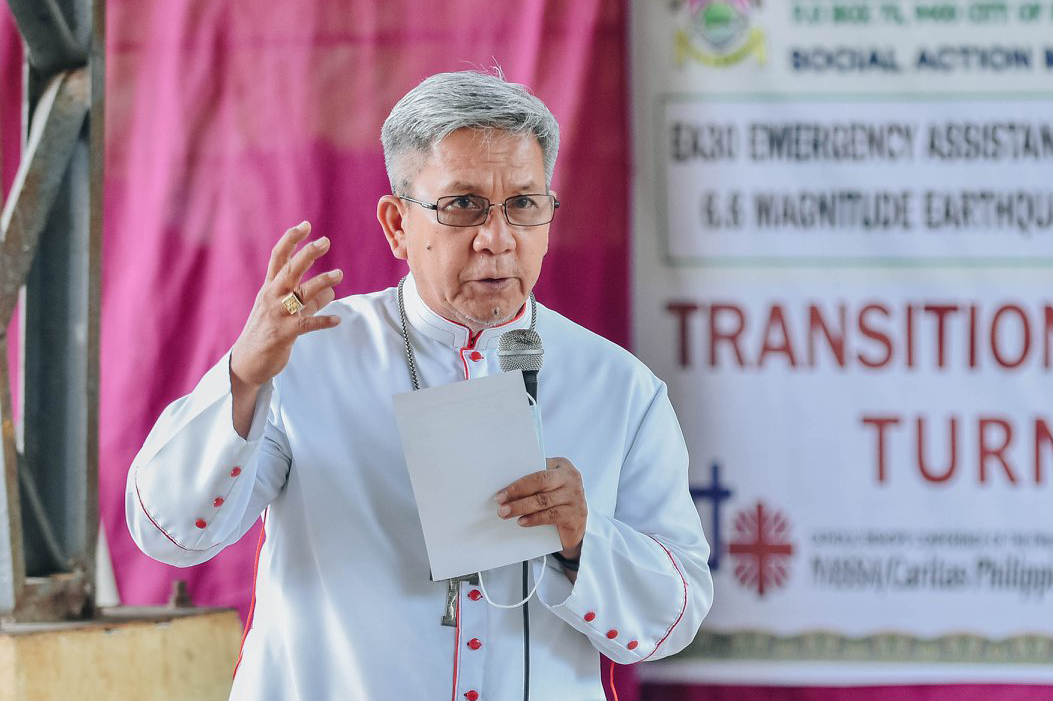By Rommel F. Lopez

Bishop Jose Colin Bagaforo of the Diocese of Kidapawan (file photo)
The Diocese of Kidapawan will distribute ashes on Ash Wednesday the more common way – by marking the foreheads of the faithful with the sign of the cross.
Bishop Jose Colin Bagaforo of Kidapawan issued a circular letter directing all priests and extraordinary ministers of Holy Communion (EMHC) to mark the foreheads of the faithful with blessed ashes on Ash Wednesday which falls on Feb. 17 this year.
This is different from the recent directive of the Vatican and the CBCP’s 2020 letter suggesting that ashes be sprinkled on the head of the faithful rather than marked on the forehead.
Bagaforo said in an interview with PressONE.ph that the decision to use the more common method of imposing ashes on the forehead was decided upon by the clergy of Kidapawan after their meeting on January 18.
When asked about the clergy’s decision to retain the common practice of imposing ashes, Bagaforo said that “it’s more meaningful and more impactful on the people’s religious piety.”
The circular letter also directs the imposing minister to say only the traditional admonition of ‘Remember that you are dust and to dust you shall return’ to every faithful as he imposes the ashes.
The directive reminds priests and EMHCs to strictly follow the local government’s health protocol of requiring Mass goers to wear face shields and face masks and observe physical distancing. Face shields are to be lowered so that foreheads can be marked with the sign of the cross.
Churches in the diocese are also reminded to follow the maximum capacity of Mass-goers as set by the local government. Bagaforo directed parish priests to schedule additional time and allocate more spaces for the imposition of ashes to avoid mass gathering of people.
Aside from palm branches, ashes of dried plants and leaves may be used as there were fewer palm fronds blessed during Palm Sunday last year when most churches were closed and public Masses restricted due to the raging pandemic.
Bagaforo ended his letter by asking the priests and laity of the diocese to continue praying for the end of the pandemic.
Back in January 12, the Vatican’s Congregation for Divine Worship and the Discipline of the Sacraments published a note guiding priests throughout the Catholic Church on how to impose ashes on Ash Wednesday amid the coronavirus pandemic. Priests are to address all those present and say only once the formula as it appears in the Roman Missal, applying it to all in general: ‘Repent, and believe in the Gospel,’ or ‘Remember that you are dust, and to dust you shall return,’” the note said.
It continued: “The priest then cleanses his hands, puts on a face mask and distributes the ashes to those who come to him or, if appropriate, he goes to those who are standing in their places. The Priest takes the ashes and sprinkles them on the head of each one without saying anything.”
Back in 2020, the CBCP issued a circular letter recommending the sprinkling or dropping small portions of blessed ash on the crown of the head during the imposition of ashes.
The CBCP circular noted that the method of imposition “is not an innovation but in accord with the ancient practice of the Church.”
“In Baptism, we have been anointed on the crown of the head. The ashes to be imposed on the crown signify our repentance from sin, which has marred the grace of Baptism.”